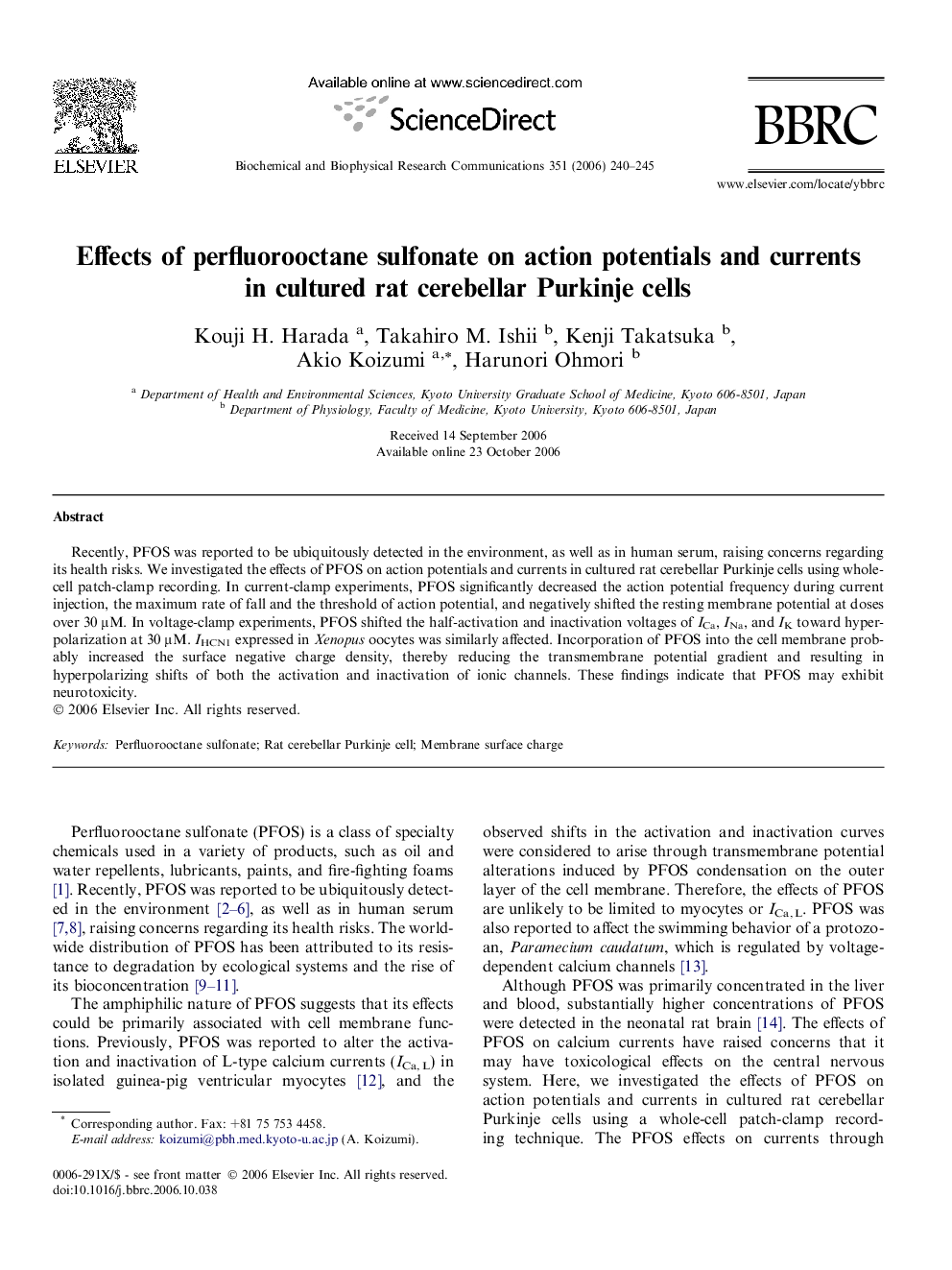| Article ID | Journal | Published Year | Pages | File Type |
|---|---|---|---|---|
| 1940256 | Biochemical and Biophysical Research Communications | 2006 | 6 Pages |
Recently, PFOS was reported to be ubiquitously detected in the environment, as well as in human serum, raising concerns regarding its health risks. We investigated the effects of PFOS on action potentials and currents in cultured rat cerebellar Purkinje cells using whole-cell patch-clamp recording. In current-clamp experiments, PFOS significantly decreased the action potential frequency during current injection, the maximum rate of fall and the threshold of action potential, and negatively shifted the resting membrane potential at doses over 30 μM. In voltage-clamp experiments, PFOS shifted the half-activation and inactivation voltages of ICa, INa, and IK toward hyperpolarization at 30 μM. IHCN1 expressed in Xenopus oocytes was similarly affected. Incorporation of PFOS into the cell membrane probably increased the surface negative charge density, thereby reducing the transmembrane potential gradient and resulting in hyperpolarizing shifts of both the activation and inactivation of ionic channels. These findings indicate that PFOS may exhibit neurotoxicity.
